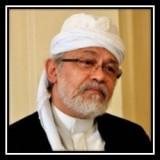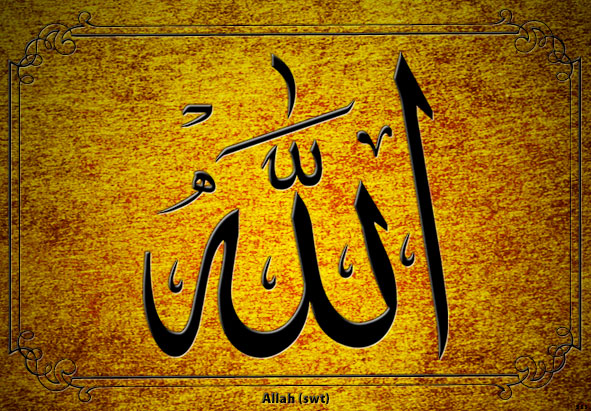During the last 300 years one of the most controversial figures to emerge on the landscape of Islam is Muhammad ibn `Abdul Wahhab.
Documentation on his birth and death dates conflicts somewhat, but most of his life was lived during the 18th century from approximately 1703-1792CE. He was born in Uyayna in the Najd area of present day Saudi Arabia. He was also born into the Tamim branch of the Banu Shinan tribe. His quest for knowledge took him to Madina, Iraq, and Syria. It appears, however, that the dominant influence on his thought was that of Taqiyyiddin Ahmad ibn Taimiyya (d. 1328CE). Nevertheless, there are significant divergences from ibn Taimiyya in his own perspectives – particularly with regard to what does or does not constitute shirk (idolatry).
What is known about him too, is that he invoked the ire of two of his prominent Shaikhs in Madina, Shaikh Muhammad ibn Sulaiman al-Kurdi and Shaikh Muhammad Hayat al-Sindi. Moreover, his father, `Abdul Wahhab and his brother, Sulaiman ibn `Abdul Wahhab vigorously expressed their opposition to his views. In fact his brother composed a work called al-Sawaiq al-Ilahiyya fi al-Radd `ala al-Wahhabiyya (Divine Flashes in the Refutation of the Wahhabis).
Muhammad ibn `Abdul Wahhab might have remained an insignificant figure had it not been for an alliance forged between himself and a contemporary of his – the Najdi tribal chief of a small but growing urban clan in the market town of Diriyya, Muhammad ibn Sa`ud. The alliance was cemented in two ways. First, by an essay Muhammad ibn `Abdul Wahhab wrote to Ibn Saud entitled Kashf al-Shubahat `an Khaliq al-‘Ard wa l-Samawaat (Clarifying the Obscurities Surrounding the Creator of the Heavens and Earth); and second, by the marriage of the daughter of Ibn Sa`ud to Muhammad ibn `Abdul Wahhab.
The essay was a massive attack on the Iman (faith) and Islam of Muslims stretching from his time to approximately 600 years back in history. While efforts have been made to exonerate Ibn `Abdul Wahhab – discussed in the next segment – from his more grievous excesses, the evidence simply remains too overwhelming to dismiss his role in the fostering of the extremism that has since dogged the Muslim world. Nonetheless, Muhammad ibn Saud adopted this work that declared most of these Muslims infidels and unbelievers. On this fundamental premise that all Muslims – apart from themselves – were now mushrikin (polytheists) and kuffar (unbelievers) they declared the surrounding lands inhabited by Muslims as one huge Dar al-Harb (Abode of War). The Hijaz was a typical example and a typical victim.
There are, needless to say, many perspectives on this alliance. Let us look at two; one in favour, the other critical.
The first one is that of the late Ismail a`l-Faruqi (who was killed, along with his wife, in rather unfortunate circumstances in his home).
In his introduction to his own English translation of Muhammad ibn `Abdul Wahhab’s Kitab al-Tawhid (The Book of Divine Unity) he states:
What was indeed extraordinary was the coincidence of the `alim and the prince, Muhammad ibn Su`ud, who felt the need for each other, and who saw the wedding of idea to arm as key to a new page in history. Such was the greatness of the two men that they saw the fateful wedlock of one’s mind with the other’s sword as a duplicate of another bay`ah or covenant entered into by the Prophet (s) and the Ansar, Muslims of Madinah, at al-`Aqabah on the eve of the Hijrah. The `alim and the prince utilized many of the same words used to seal the Prophetic covenant. The theater where all this took place was Dar’iyyah, a village in east central Arabia.
In these dramatic and romanticised terms Faruqi continues to extol, throughout his introduction, the virtues of this alliance. Moreover, he reinvents the Najd as one of the “isolated corners of the Muslim world” that has been untouched by the “encounter between the Muslim East and the Christian West taking place in Eastern Europe.” They were free, as it stood, from the impact of the West on the Caliphate in Istanbul.
Through this reinvention the stage is set for the Najd to appear as a carbon copy of the “isolatedness” of Arabia during the time of the Prophet (s). The stage is set, in other words, for an acceptance of a renewed and purified version of Islam as a mirror image of the time of the Prophet (s). This facile attempt of Faruqi’s simply does not work. The social conditions prevalent during the time of Muhammad ibn `Abdul Wahhab’s Najd and those of the Najd during the time of the Prophet (s) and the Kharajite rebellion against Sayyidina `Ali were not significantly different.
It would have been more appropriate and more instructive for Faruqi to compare these two conditions rather than that of Muhammad ibn `Abdul Wahhab’s Najd and the conditions prevalent in the Hijaz at the time of the Prophet (s). For example, we know that Muhammad ibn `Abdul Wahhab emanates from the same clan that formed the most powerful base of the Kharajites during the time of Sayyidina `Ali, namely, the Banu Tamim. It would, therefore, have been of immense interest to examine any ideological linkages that might have existed between the Kharajites of then and the ideological conditions prevailing in the Najd during Muhammad `Abdul Wahhab’s time. After all – and this is one of their great virtues – Arabian tribal life is known for its integrity in oral traditions. Moreover, both the principles and consequences of his version of “Tawhid” were almost identical to those of the Kharajites. We shall return to these themes and their impact on 20th century Islam later.
Let us look at another more critical view. In his Islams and Modernities Aziz al-Azmeh states:
The most direct aspect of the social alliance between divines and Saudi princes is the direct political role of the former. Though it may be true that the original compact between Muhammab b. `Abd al-Wahhab and Muhammad b. Su`ud at Dir’iyya, the first Saudi capital, was the one in which the divine was the ‘senior partner’, this is only so in the sense that it was he who was in charge of the legal system. Yet the pre-eminence of the Al Shaykh, the descendants of Ibn `Abd al-Wahhab, in the legal and religious institutions of successive Saudi states is a factor connected with both their position in family alliances and their capacity to formally charter transfers of power.
Further on he observes:
By requiring subjection in principle to the authority whose voice is Wahhabism, this doctrine simultaneously renders these subjects open to the dictation of cultural and societal relations whose ground and condition are this authority. In short, Wahhabite fundamentalism puts forward a model whose task is to subject local societies with their customs, authorities, devotions, and other particularities to a general process of acculturation which prepares them for membership in the commonwealth whose linchpin and exclusive raison d’etre is the absolute dominance of the house of Su`ud.
This, in my opinion, is a far more accurate interpretation of the realities of Wahhabite politics than Faruqi’s romanticised version of a renewed and liberating form of Islam emerging from the untainted and untouched soil of an “isolated” Najd.
Nevertheless, the politics in the Arabian Peninsula are not as simple as both its detractors and supporters often imagine. Wahhabism itself has undergone a number of revisions; and with revisions come conflict. This is clearly indicated by the present tension between the Saudi state – which promotes itself as a moderate form of Wahhabism – and its more extremist Wahhabite opposition in the form of Dr Safar al-Hawali and his supporters on the one hand, and the Muhajirun movement stationed in London on the other. In addition the Wahhabites and the Tabligh Jama`at – which has the Kitab al-Tawhid of Muhammad Abdul Wahhab as its founding inspiration – are also anathema to one another.
It is not Wahhabism that sustains the present Saudi state. It’s a strong economy fuelled by oil and massive foreign interests that maintains its integrity. Meanwhile the Wahhabite propaganda machinery persists in trying to “acculturate” the rest of the Muslim world into acceptance of its “purified” version. While we are definitely not blind to the politics of the situation, our chief concern remains to examine the impact of Wahhabism on 20th century Islam and Muslims. In the next segment we shall look at the rise of Wahhabite power and the principles that informed that movement.



